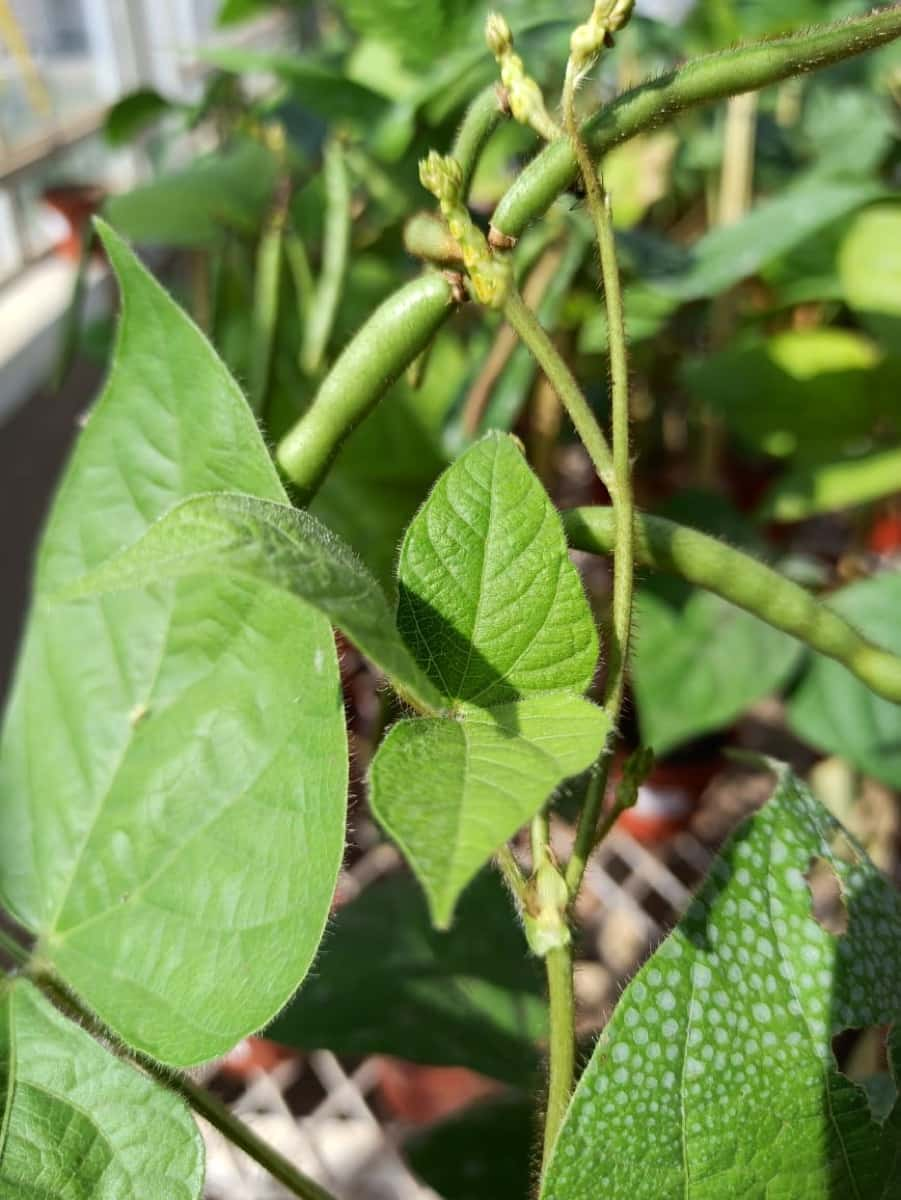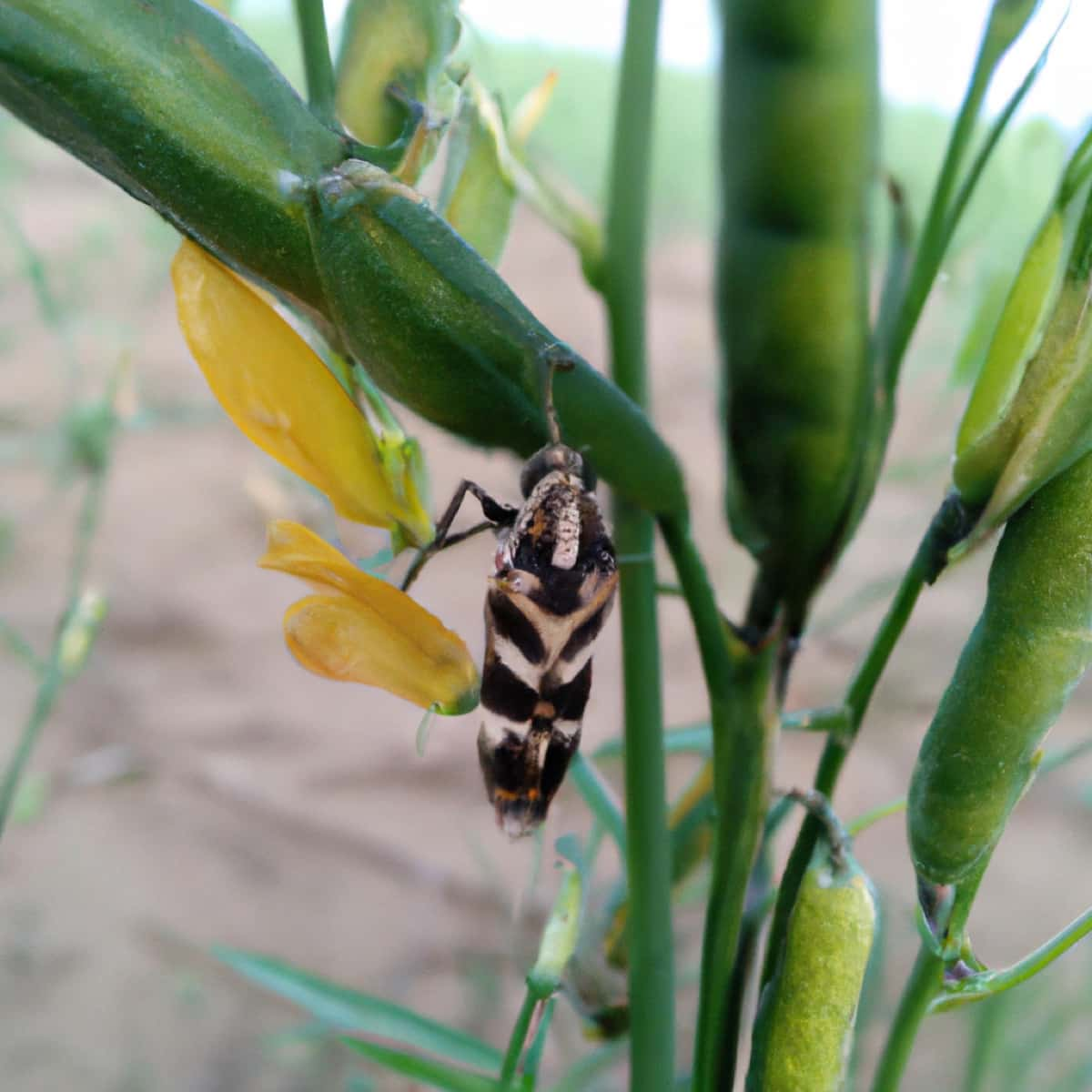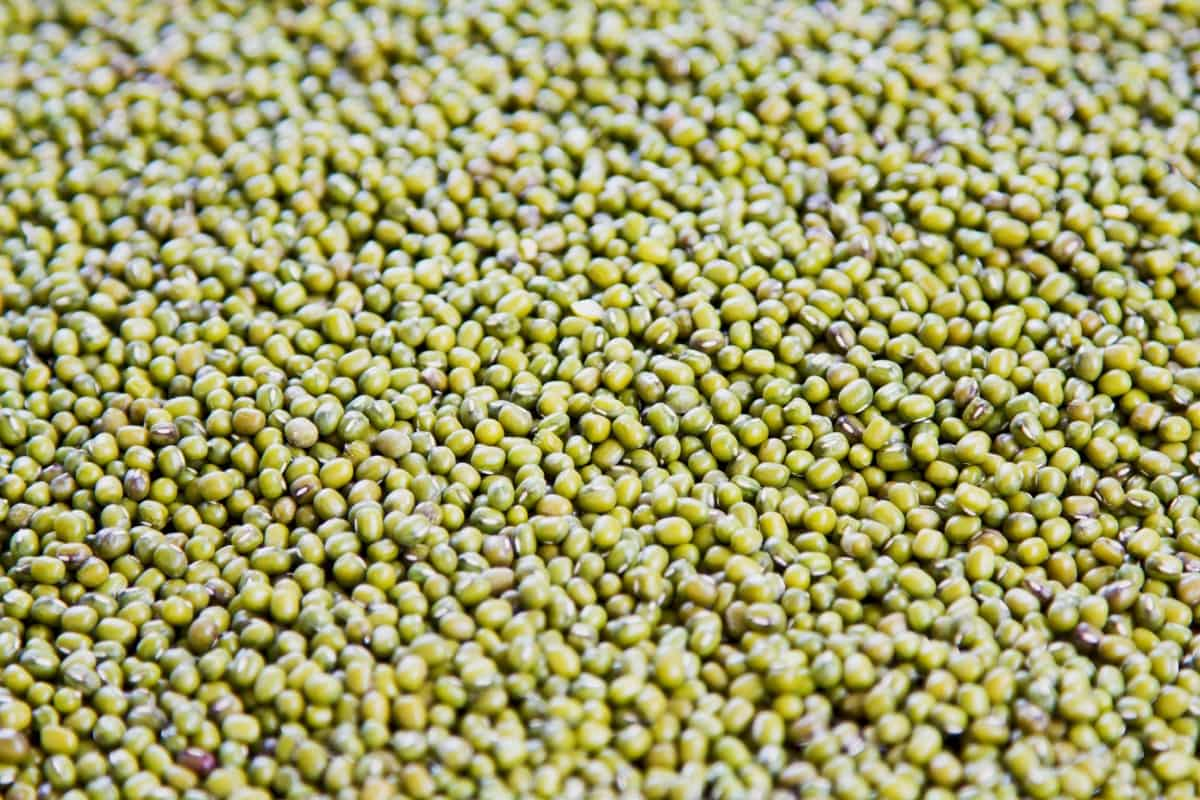Spotted pod borer (Maruca testulatis) is a major pest of legume crops, including red gram, green gram, black gram, and lab-lab. In recent years, this pest has had a significant outbreak. The outbreak can be attributed to several factors, including food availability, cultivation of medium and local varieties, weather conditions, and breeding habits close to flowering.

The spotted pod borer causes damage to the crops by feeding on the pods and leaves, leading to reduced crop yield and quality. In addition, it also feeds on the leaves of daincha, green manure, further reducing soil fertility. Management of spotted pod borer includes both cultural and chemical methods.
Cultural methods such as crop rotation, intercropping, and planting early maturing varieties can help to reduce the pest population. Additionally, timely weeding and removal of crop residues can help control the pest. Chemical methods include the use of pesticides. Integrated pest management (IPM) practices, combining cultural and chemical methods, can provide effective and sustainable management of spotted pod borer in legume crops.
Spotted Pod Borer Management in Green Gram
Identification of Spotted Pod Borer
The Spotted Pod Borer can be identified by its distinct appearance in various life stages. The eggs of this pest are oval and yellow. The larva is greenish with a brown head and short dark hairs on black warts on the body. The pupa is found in a thin silken cocoon on the pod or leaf fold and is yellow with a greenish body. The moth has white patches on the dark brown forewings and a dark border on the white hind wings.
The Life Cycle of Spotted Pod Borer
The Spotted Pod Borer’s life cycle includes four stages: egg, larva, pupa, and adult. The female moth lays eggs in small clusters of 10 to 15 on leaves, buds, and flowers. After hatching, the larva feeds on the plant’s leaves and pods, causing damage. The larva is greenish-white with a brown head and has two pairs of dark spots on the back of each segment.
The pupation stage occurs in a silken cocoon in leaf webbings or the soil. The pupa is yellow with a greenish body. After completing the pupation stage, the adult moth emerges from the cocoon. The adult moth has light brown forewings with white markings and hindwings with brown markings at the lateral edge.
Causes/Conditions Favorable for Spotted Pod Borer Spread in the Field
The Spotted Pod Borer infestation occurs during the seedling stage until podding/ seed setting, and it thrives in temperatures between 20 – 28°C. The yield losses caused by this pest are estimated to be 20 – 50%. The larvae of the Spotted Pod Borer are nocturnal. They primarily attack the stems, peduncles, flowers, and pods of various host plants, including gram, lablab, chill, peanut, tobacco, cotton, soybean, sesame, sugarcane, castor, Hibiscus, and other hosts.
Damage Symptoms of Spotted Pod Borer
- The nature of the damage caused by this pest includes the larva webbing together leaves, buds, and pods and feeding inside these webs.
- The larva also bores into the pods and eats up the ripening seeds, resulting in significant yield losses.
- Damage includes the presence of webbed masses of leaves, buds, and pods and a crown mass of excrement at the entrance into the larval burrow.
- Additionally, the pest can cause defoliation in the early stages and the presence of round holes in the pods.
In case you missed it: Yellow Mosaic Disease Management in Green Gram: Symptoms, Identification, Treatment, Chemical, Biological, Natural, and Organic Control

Yield Loss Due to Spotted Pod Borer on Green Gram
Spotted Pod Borer infestation can lead to significant 20-25% economic losses and yield losses of 2-84% in green gram. Yield losses caused by this pest in various crops are estimated to be between 20-50%, highlighting the need for effective management strategies to mitigate the impact of this pest on crop yield and economic returns for farmers.
Spotted Pod Borer Management in Green Gram by Cultural Method
- Planting early to avoid the peak pest infestation period
- Crop rotation to reduce the buildup of pest populations
- Intercropping with repellent crops such as marigolds and chili
- Use of pheromone traps to monitor and control adult moths.
Spotted Pod Borer Management in Green Gram by Biological Method
- One of the most effective organic/natural methods for managing Spotted Pod Borer in green gram is using biological control agents.
- Parasitoid flies and wasps, such as Tachinidae, Braconidae, and Ichneumonidae, can significantly reduce the pest population.
- Predators like lacewing, ladybird beetle, spider, red ant, dragonfly, robber fly, reduviid bug, and praying mantis can also help control the pest.
- Combined, these natural enemies can reduce the infestation of Spotted Pod Borer by up to 98%.
Spotted Pod Borer Management in Green Gram by Chemical Method
Spotted Pod Borer is a common pest in Green gram cultivation, and chemical control methods can be used when the infestation exceeds the economic threshold of 3 larvae per 1 square meter.
- Azadirachtin (1500 ppm) can be applied at the onset of a pest attack using 5 ml/liter.
- Other effective insecticides include chlorantraniliprole 18.5 EC (0.3 ml/lit), chlorpyrifos 20 EC (2 ml/lit), profenophos 50 EC (2 ml/lit), Spinosad 45 SC (0.3 ml/lit), Emamectin benzoate + lambda-cyhalothrin 5 EC, or flubendiamide 39.35 SC (0.2 ml/lit).
Spotted Pod Borer Management in Green Gram by Organic/Natural Method
Neem oil-based emulsifiable concentrates (EC) containing azadirachtin or Bacillus thuringiensis can be used as foliar sprays. These should be applied at the beginning of flowering until harvesting. Neem oil or BT formulations are recommended only once at the beginning of the crop season or as soon as an infestation is noticed. These biological pesticides effectively control Spotted Pod Borer and are safe for the environment and human health.
Preventive Measures for Control of Spotted Pod Borer
Preventive measures include using resistant varieties, monitoring fields for signs of the pest, hand removal of infested plant parts, optimal fertilization, weeding, drainage, and use of light traps. Providing perches and open spaces for birds can also help control larvae. Additionally, crop rotation with non-host plants and removal of plant residues after harvest.
In case you missed it: Rust Management in Green Gram: Symptoms, Identification, Treatment, Chemical, Biological, Natural, and Organic Control

Conclusion
Spotted Pod Borer is a common pest in Green gram crops that can cause significant yield losses if not managed effectively. Proper identification and early detection are key to control measures for effectively managing this pest, including cultural, chemical, biological, natural, and organic methods.
- Deworming Schedule for Dogs/Puppies: A Beginners Guide
- How to Prevent and Control Parasites in Goats
- Beneficial Insects in Pest Management
- Natural Solutions for Pest Control in Flower Gardens
- Types of Fungicides Used in Agriculture
- Common Issues in the Fruit Development Stage of Pomegranate Farming
- Fruit Development Issues in Papaya: Easy Solutions and Treatment
- Soil-Borne Diseases and How to Protect Your Plants
- Practices to Prevent Disease Spread in the Garden